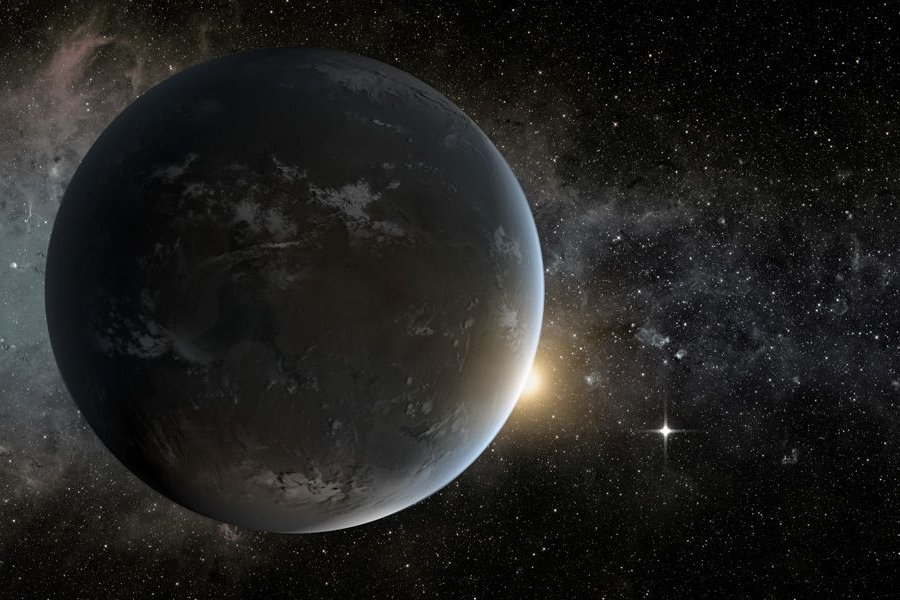Over 2,700 light years away, a mysterious world orbits in the Swan constellation. Cataloged as Kepler 69c, questions churn around this alien planet. What secrets might it hold? NASA’s Kepler telescope first spotted this extrasolar enigma back in 2013.
But much of Kepler 69 c identity remains concealed behind the shadows of distance and limited observation capabilities. Only a few sparse details have surfaced on this exoplanet so far, barely illuminating what may lurk on its alien landscape.
Tantalizing clues taunt from afar, hinting at characteristics that make this exoplanet special among the multitude of worlds in the Milky Way. As technology progresses, astronomers continue analyzing the data on Kepler 69c to reveal more facets of this perplexing planetary neighbor.
But many questions remain unanswered. What are the chances of Kepler 69c being habitable? Does it possess an atmosphere, water, or a protective magnetic field? The possibilities for this alien planet entice for further exploration.
This article will explore the intriguing clues gathered thus far about this peculiar exoplanet, its properties, and its environment. While substantial mysteries around this distant world endure, advancing technology is beginning to lift the cloak on its alluring secrets little by little.

What is Kepler 69c?
Kepler 69c is an exoplanet, which means it’s a planet outside of our solar system. It’s located in the constellation of Cygnus, and it’s about 2,700 light-years away from Earth.
Kepler 69c orbits around a star called Kepler-69, a star similar to our Sun. Scientists think Kepler 69c might be rocky, like Earth, but much bigger – about 70% larger, to be precise. It’s also quite hot, with temperatures that could melt metal.
Discovery of Kepler 69c
The Kepler space telescope detected Kepler 69c using the transit photometry method. This spots tiny dips in a star’s brightness that occur when an orbiting exoplanet passes in front of it. Repeating transit events indicate and confirm the presence of an exoplanet.
Other techniques like radial velocity and direct imaging also help discover exoplanets. Kepler greatly expanded our knowledge by finding over 2,000 exoplanets with its transit photometry capabilities. The sheer number showed that such planets are actually very common in our galaxy, contrary to old models. Kepler revealed a diversity of exoplanets, including many strange new worlds radically unlike anything seen in our solar system before.
Kepler 69c orbits a Sun-like star in a zone that may support liquid water. Understanding exoplanets like Kepler 69c is key for the search for extraterrestrial life. The search continues for small, rocky exoplanets that may be habitable to life as we know it.
Characteristics of Kepler 69c
Kepler 69c has an estimated mass of about 1.5 times that of Earth’s. This higher mass would result in greater surface gravity. In turn, the increased gravity could enable the exoplanet to better retain an atmosphere if present. Additionally, more mass allows for the possibility of a protective magnetic field to shield potential life.
In terms of size, Kepler 69c is believed to be approximately 1.7 times wider than Earth – making it around 70% larger overall. This greater scale points to it likely being a mini-Neptune planet rather than a purely rocky world like our own. A larger Kepler 69c would be able to retain more heat energy from its host star to warm oceans if they exist on its surface.
With a more substantial size, Kepler 69c may also form a thicker atmosphere versus smaller planets. However, without direct observations, the actual composition and nature of any atmosphere remain unknown for now and require additional analysis.
Temperature and Reflectivity
Kepler 69c has an estimated equilibrium temperature of 242°F (117°C). Different factors control exoplanet climates. Equilibrium temperature balances incoming and outgoing radiation. Kepler 69c absorbs more heat than Earth due to a closer orbit to its star.
Models give Kepler 69c an albedo of 0.3 like Earth’s. This means 30% of starlight is reflected by clouds. If Kepler 69c has bright clouds, this could moderate temperatures for possible surface life.
More study of Kepler 69c temperature variables is still needed. The bond albedo specifically gives the total reflective properties, including clouds and any ice or surface features present.
Conclusion
The exoplanet Kepler 69c resides over 2,700 light years away, keeping many of its secrets closely guarded. Yet, as technology progresses, astronomers continue unveiling clues about this alien world bit by bit.
Through observations of Kepler 69c thus far, insights about its size, environment, and characteristics that influence habitability have come into focus.
However, significant questions persist about the true nature of Kepler 69c and its prospects to support life. We hope realization has dawned that exoplanets like this one, orbiting at just the right distance from Sun-like stars, may one day be revealed as akin to Earth, perhaps even harbor life.
As instruments and modeling strengthen, Kepler 69c’s landscape may transition from extrapolation to reality. While today is more enigma than an ethereal twin, dedicated exploration offers the promise of this alien planet materializing before our eyes.
